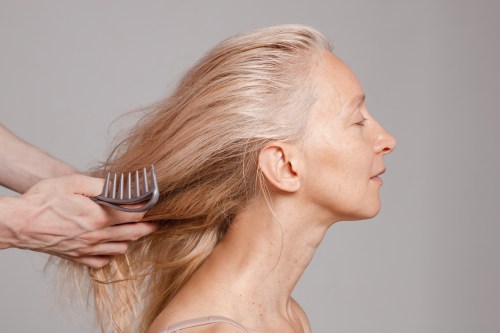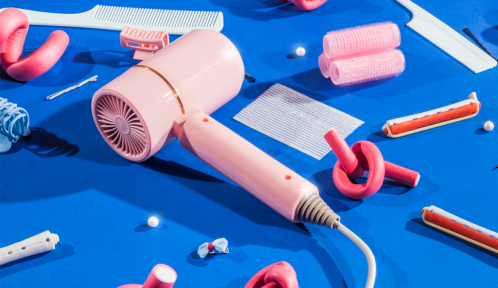What split ends? *This* is how often to get a trim to avoid visible hair damage
Experts weigh in on the best ways to avoid — and treat — those pesky split ends in your hair once and for all.

Split ends are to hair what pimple popping is to skin: oddly satisfying. One could spend hours searching for a split-end and even longer resisting the urge to tug at it. While there’s technically no way to mend a strand once the split has happened, there are a whole ‘lotta solutions to keep this from occurring in the first place, including knowing the perfect amount of time to keep between your salon appointments.
First things first: To break the haircut-split-end cycle, it’s important to understand the behaviors that lead to splits. “They usually happen due to dehydrated hair or overuse of heat tools and chemicals from treatments or products like bleach, relaxers, hot irons, blow dryers, or even bad brushes,” explains celebrity hairstylist Paul Labrecque of New York City’s Paul Labrecque Salon and Spa. They occur because the hair’s outer most layer called the cuticle endures either a physical or chemical reaction that causes it to become damaged and split into two or more parts, according to Nicole Leal, master stylist and director of education at Chicago’s 901 Salon.
Sadly, splits are pretty much a fact of life, especially if you’ve got blonde highlights (raises hand) or are a die-hard hot tools user (uhh: raises other hand). Thankfully, though, knowing how often to get a trim can be *game-changing* because no matter how much time or effort you dedicate to keeping your strands in tact, the only true way to fix split ends once-and-for-all is to get your butt into the salon chair. “You can temporarily mend the ends together but you can never truly repair hair once it’s been damaged—the best thing is to get a haircut and start fresh,” says Leal. Plan on making the trip every three months if you style frequently, four months if you style moderately, and five months if you tend to keep things natural.
That intel should give you a pretty good baseline, from which you can develop other healthy habits. Lebreque says to stick to boar bristle brushes when raking through your strands because they’re much kinder on your hair than other varieties (looking at you metal and plastic). When heat styling, opt for using your iron or blowdryer on a medium setting because ultra-hot temps can cause more damage to the cuticle (and even alter the structure of the inner-most part of hair: the cortex). Oh, and this: Ahead of any heat tool, make sure you’re using protection. A product like Briogeo Rosarco Blow Dry Heat Protectant Creme ($24) is packed with natural oils such as rosehip, argan, and coconut which help to guard the strand from excess heat without weighting hair down.
Of course, if a split happens and you have to deal (and quick!) there are options that will get you through. “There are a number of products available to help seal ends and give them a really healthy appearance,” says Lebrecque. One of our faves? The Living Proof Perfect Hair Day Fresh Cut Split End Mender ($25), which helps to zip the two ends together and seal them in place until your next wash.
And by the way? Splitting them yourself—no matter how slow the workday is—is never a good idea. (Ugh, fiiiiine.)
Psst, we’ve got a secret: Taking your hair to its greatest lengths ever (sans split ends) actually starts in the shower. And if you need a little extra R+R for this summer’s heat damage, don’t worry — we’ve got you covered.
Sign Up for Our Daily Newsletter
Get all the latest in wellness, trends, food, fitness, beauty, and more delivered right to your inbox.
Got it, you've been added to our email list.










